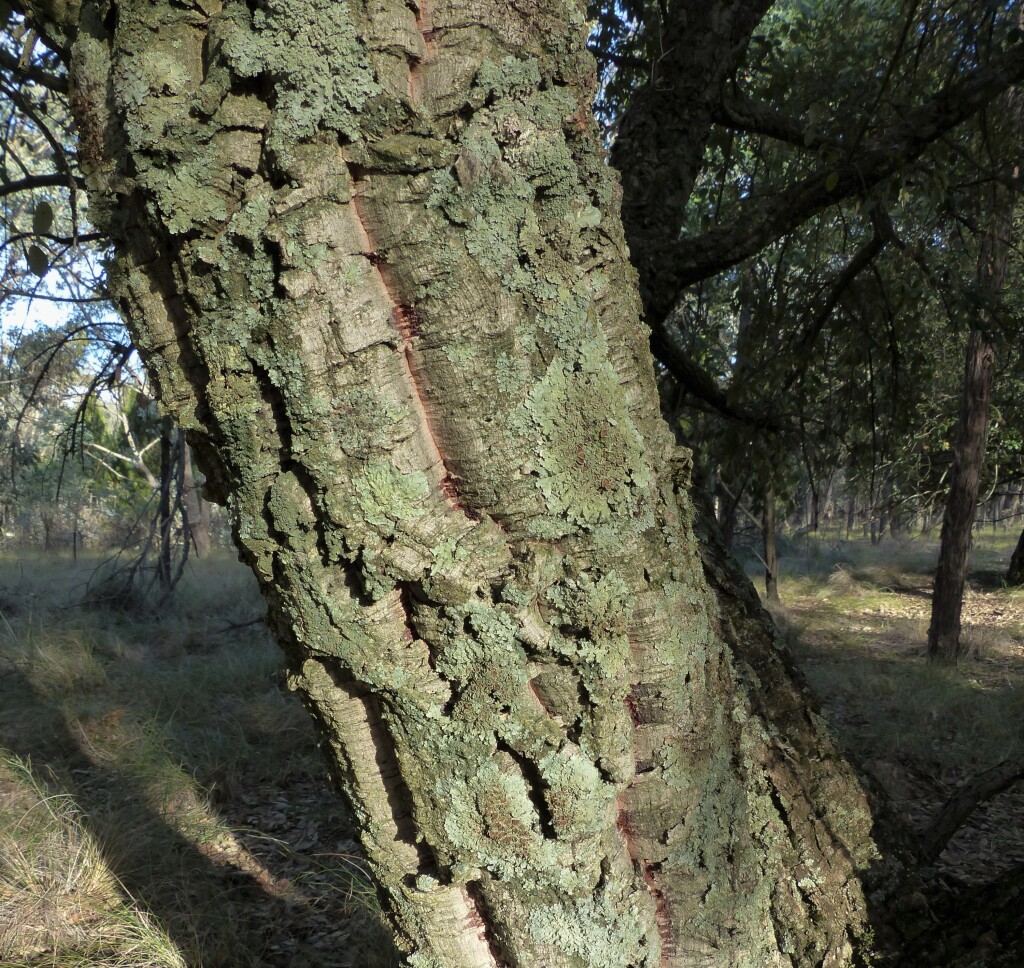Quercus suber
L. Cork OakEvergreen tree to c. 10 m high. Bark thick (to 5 cm or more), deeply furrowed and corky. Leaves harsh-textured, ovate, mostly 4-7 cm long, 2-3.5 cm wide, margin usually with 4-6 pairs of short acute teeth, rarely entire, the lateral veins excurrent as a short bristle or point to c. 3 mm long, upper surface dark green, finally glabrous, lower surface grey-green, densely pubescent; petiole 1-1.5 cm long. Acorns narrow-ovoid, 1.5-2.5 cm long, singly or paired on peduncles 5-10 mm long; cupule up to half as long as acorn, initially shaggy from the free tips of the scales, but finally scales barely raised. Catkins appear spring. Acorns produced mostly Mar.-May.
GipP, CVU. Native to south-western Europe and northern Africa. Grown in Victoria mainly for ornament, but some early plantings (e.g. Mt Beckworth near Clunes, Harcourt area) apparently intended for cork production. Weakly escaping. One record from a railway cutting near suburban St Kilda.
The source of commercial cork, produced mainly in Spain and Portugal. Useable bark is produced after c. 20 years and may be harvested every 10 or so years thereafter.
 Spinning
Spinning
